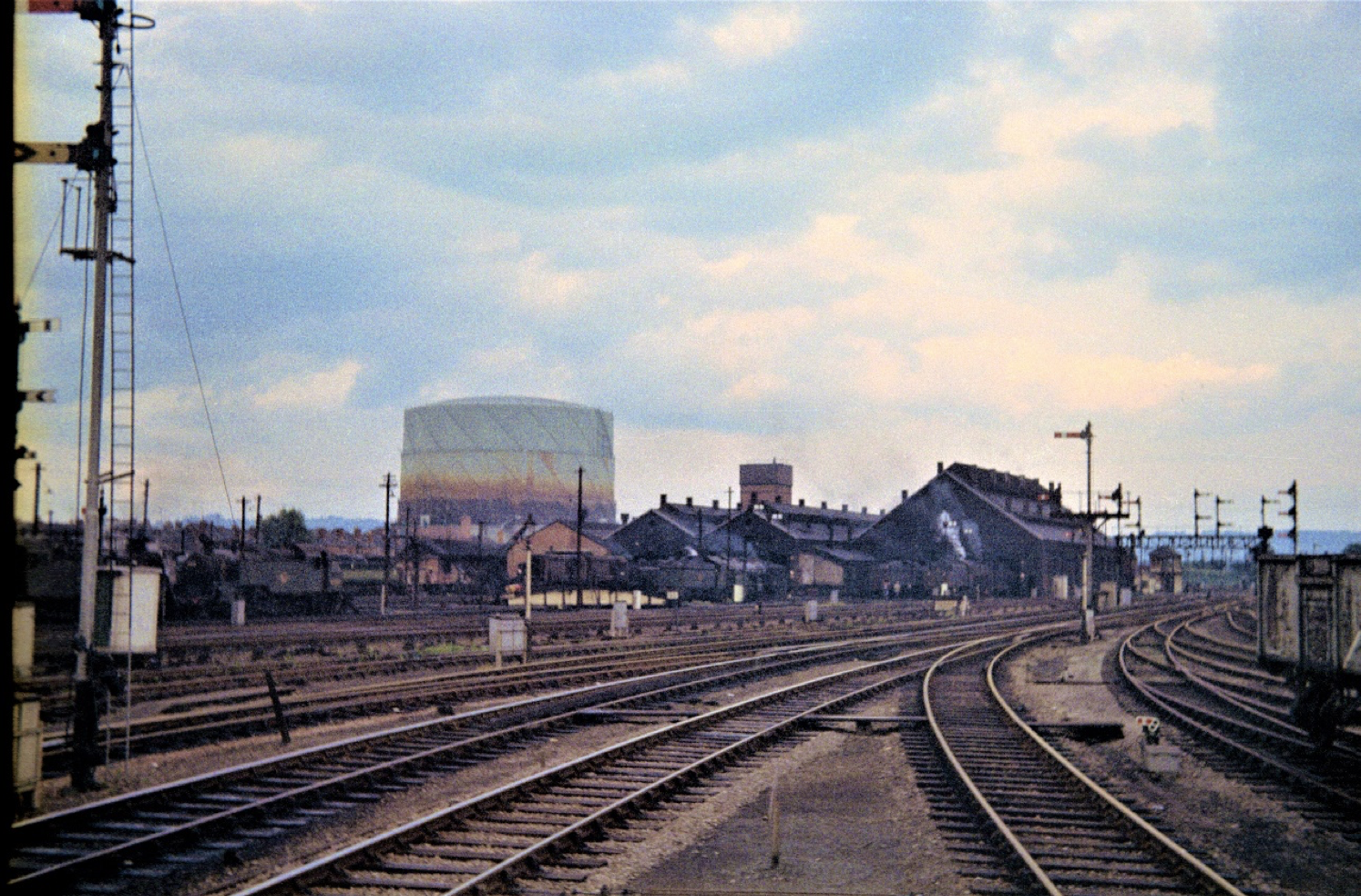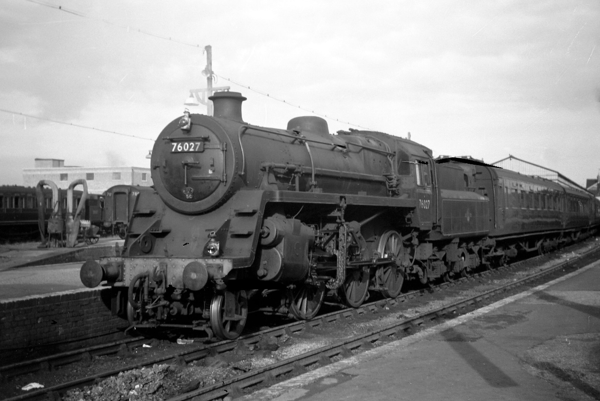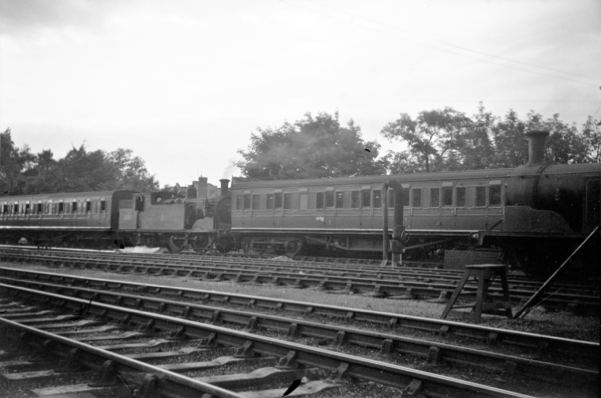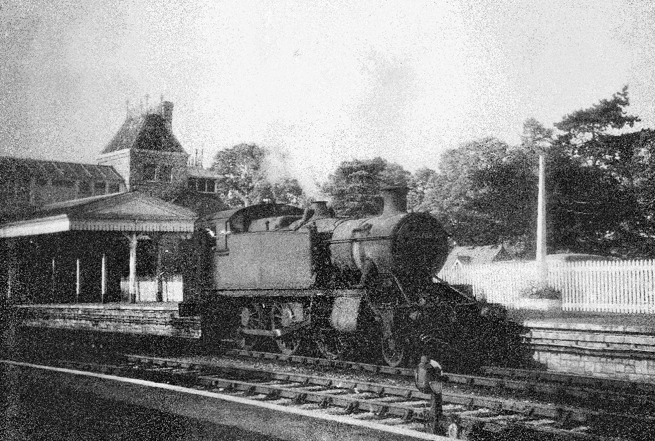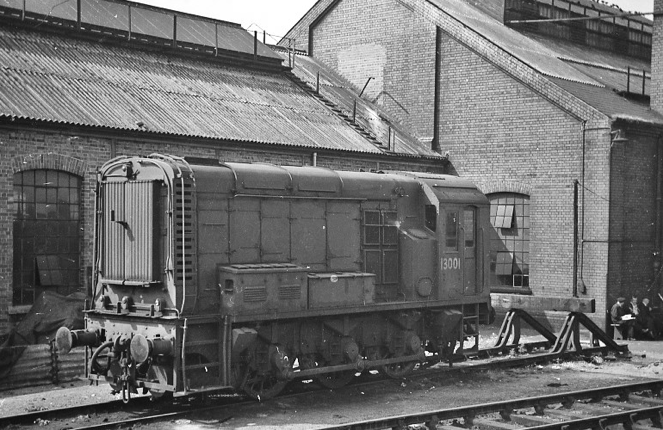Holiday Expresses in the Nineteen-fifties
Do you remember the days of Holiday Expresses? In the late 1950s, British Railways organised a programme of day trips from some of the larger towns, especially those with a railway community, which over five consecutive days provided a series of day trips to the seaside and other places of tourist interest. It provided an opportunity for families of limited means who were unable to afford a week’s holiday away to have a programme of day trips without staying away from home. For us railway enthusiasts in Gloucester this provided the opportunity of a journeys to places not normally visited, Our parents, of course, realised that the journey was the main interest as far as we were concerned: wandering around our destination for five or six hours was not the prime purpose for us.
My early knowledge of them was confined to photographs and reports in the railway press, but one picture which still is indelibly printed in my mind is that of the City of Leicester Holiday Express, headed by an immaculate ‘B17’ 4-6-0 No. 61665 Leicester City, complete with a circular headboard taking up the whole of the smokebox front, specially allocated to work the train.
Visitors came through Gloucester on occasion too. For example, in 1957 the City of Birmingham Holiday Express was noted through on its way to Weston-super-Mare headed by an immaculate ‘Black 5’ from Aston shed, an unusual visitor for us, as Saltley normally provided locomotives for trains from the Birmingham area. Roger also recorded ‘Black 5’ No. 45111 (9A) on the Birmingham Holiday Express at Tuffley on 3 August 1960.
Gloucestershire Holiday Express – 1959
After Dad’s death, our family went on the Gloucestershire Holiday Express for five daytrips in 1959, from Monday to Friday, 3 to 7 August, to Bournemouth, Barry Island, Oxford, Weston Super Mare and Paignton. Unfortunately, I have very few records of the week out, but luckily my friend Roger Speck was also on board for the week and has kept his records. I have a few photographs, but some of the negatives from my box camera were not satisfactory, mainly because I was into home developing at the time, mostly carried out in the kitchen! I also had an enlarging box with a fixed lens which could blow up 620 negatives to postcard size, although it limited the quality of the prints I could make.
On Monday we went to Bournemouth over the S&D. Roger’s records show the most exciting loco seen was ‘Schools’ class No. 30910 Winchester, which had recently been transferred to the SW Division following the electrification of the Kent Coast. Ex-MR ‘1F’ 0-4-4T No, 58086 was also seen, being the engine normally used on the Highbridge branch from Evercreech Junction. Whilst waiting for our return train, I took photographs of ‘LN’ No. 30855 Robert Blake, ‘N15’ No. 30765 Sir Gareth, ‘M7’ No. 30107 and Standard ‘4’ No. 76027 at Bournemouth West.
On Tuesday we went to one of our regular destinations, Barry Island. On our excursion trips from Gloucester our locomotive and train would often be the largest to be seen there, being hauled by a ‘5300’ class 2-6-0 or a ‘Grange’. Although frequently loaded to 10 coaches, this was not a problem, as the route down the Severn Estuary was level. The excitement began when we reached Severn Tunnel Junction where, on the north side of the line stood the MPD full of dirty ‘Churchward’ 2-8-0s. Onwards the four-track section took us through Newport High Street on the through lines and into the tunnel. On this occasion, it was surprising to see a 0-6-0 diesel shunter off the track outside Cardiff Canton shed.
What was remarkable however was the sheer volume of traffic that the Island station had to handle. Train after train from the Welsh Valleys would arrive, comprised of 8 or more non-corridor coaches headed by a ‘5600’ 0-6-2T, or occasionally a Prairie tank of the ‘5100’ class. In the evening returning trains would be drawn in by one engine, and once the train engine had been coupled up to the other end of the train and had departed, the released engine would then attach itself to the next departure. Roger recorded several interesting locos including Churchward 2-6-2T No. 3103 at Ebbw Junction, a locomotive we were to see at Swindon works in 1960 after withdrawal from service.
On Wednesday we went to Oxford, Roger noting ‘9F’ No. 92204, built at Swindon only four months previously. On Thursday we had a more local trip to Weston-super-Mare. On Friday 7 we went to Torquay. By now early members of the ‘Warship’ diesel-hydraulics had been introduced to the West of England main line, and five were seen during the journey, including No. D602 Bulldog. In these days, excursion trains would often bypass Temple Meads station and use the Bristol avoiding line, stopping outside St Phillip’s Marsh MPD to change crews. This provided the opportunity to photograph No. 13001, one of the earliest 350 hp 0-6-0 diesel shunters outside the depot, later to become No. D3001. The most interesting loco seen was No. 4700 the first member of the small Churchward ‘4700’ class 2-8-0s. On our return I managed to get a photo of 2-6-2T No. 4105 at Torquay station, being the banker for return trains up to Torre.
Gloucestershire Holiday Express – 1960
Our family also went on the Gloucestershire Holiday Express in 1960. The first trip on Monday 1 August was a long one, to Rhyl. The journey was tinged with sadness though, as we had stayed there on holiday the previous year, when our father was still alive. I timed the journey over a route which I had not travelled before. The train was hauled by ‘Modified Hall’ No. 7926 Willey Hall, and ran via Stourbridge Junction, being assisted up through Bretell Lane as far as Dudley by 2-6-2T No. 5176, continuing to Wolverhampton and then on to Shrewsbury. From there ‘Black 5’ No. 44835 took over for the next section over the Whitchurch – Chester line through Malpas. This line was freight only, even at this early date. Chester’s Standard 2-6-4Ts had recently been exchanged (in March) for Fairburn 2-6-4Ts from the Scottish and Southern Regions, so these provided more cops. At Rhyl, Stanier ‘3’ 2-6-2T was still around (No. 40078), and L&Y 0-6-0 No. 52438, but the ‘2Ps’ had been replaced by Standard ‘2s’ (Nos. 78018/55). A new diesel, No. D267, was also in evidence.
On 3 August, the GHE took us to Windsor, so I took the opportunity to go by local EMU to Waterloo, via Feltham. More Southern locomotives reallocated away from Kent as a result of electrification were seen (including ‘N15’ No. 30777 Sir Lamiel and ‘V’ No. 30914 Eastbourne). An interesting sight at Clapham Junction was ‘J50’ No. 68946, which had worked a transfer freight through from the ER. I spent some time at Liverpool Street, with its immaculate station pilot, ‘J69’ No. 68613, and where local trains were still in the hands of ‘L1s’ and ‘N7s’. Longer distance expresses were worked mainly by ‘B1s’ and ‘Britannias’ (Nos. 70012/34/6) from Norwich (32A). ‘K3’ 2-6-0 No. 61953 and 2-6-4T No.42227 were also seen there.
On 5 August we went north again, to Dudley Zoo, our 10-coach train headed by ‘Grange’ No. 6838 Goodmoor Grange, which was assisted from Stourbridge Junction up to Dudley by 2-6-2T No. 4161. I also timed the outward journey, but unfortunately have no records of locos seen on this trip.
Gloucestershire Holiday Express – 1961
The GHE also ran in 1961 from Monday 7 to Friday 11 August, with five daytrips to Minehead, Porthcawl, London, Weston-super-Mare and Birmingham. Minehead and Porthcawl were new destinations, and so gave the opportunity to traverse new sections of route: from Taunton to Minehead, and Pyle to Porthcawl. Again, Roger recorded some of the more interesting locos seen on these trips.
On Wednesday, the destination was London. At the Kings Cross stabling point, Roger recorded ER Pacifics, including ‘A3’ Nos. 60047/9 from Grantham, ‘A1’ Nos. 60125/33/6/41/58, and a Peterborough ‘A2’, No. 60514 Chamossaire. ‘Deltics’ had recently been introduced to the East coast main line, so it was exciting to see No. D9008, as well as ‘Baby Deltics’ Nos. D5902/9. A more unusual visitor there was Black 5’ No. 45116 – from the GC line – which may have been to test the new AWS system. We also paid visits to St Pancras, Liverpool Street and Clapham Junction. Main-line diesels from many classes were recorded, including D8407 and early members of EE ‘Type 3s’ at Liverpool Street. Brush ‘Type 2s’ were common at both King’s Cross and Liverpool Street.
On Thursday, we went to another of our regular excursion destinations, Weston-super-Mare (Locking Road). This station was used to berth excursion trains which were quite common in the late fifties. The station was a terminus just to the north of the General station which was a through station on the loop off the Bristol – Taunton line. Weston was an interesting place in itself; and in those days it was possible to take a pleasure sailing on the Bristol Channel on one of Campbell’s paddle steamers from the Old Pier across to Penarth.
On Friday, on arrival at Birmingham New Street, we decided to take a train to Bescot, where Roger recorded four ex-LNWR ‘Super D’ 0-8-0s (which we always called ‘Duck-eights’). In passing Aston (3D), we also noted two of the shed’s allocation of Stanier ‘Crabs’. Both these locomotive classes were rare in Gloucester.
